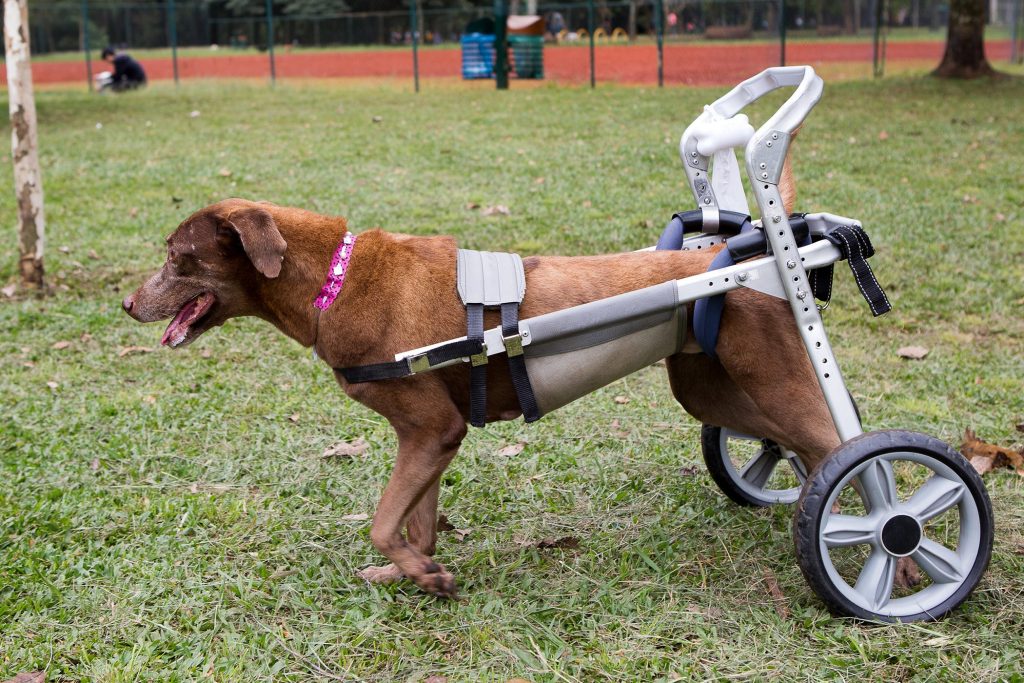Contents
- Factors Affecting the Cost of Dog Leg Amputation
- Size and Breed of the Dog
- Location and Type of Veterinary Clinic
- Experience and Reputation of the Veterinarian
- Preoperative Diagnostic Tests
- Type of Amputation Technique
- Postoperative Care and Medications
- Complications or Additional Treatments
- Geographical Location
- Additional Services and Follow-up
- Pet Insurance
- Average Cost Range for Dog Leg Amputation
- Factors Explained
- Size and Breed of the Dog: Affecting Anesthesia and Surgical Equipment Requirements
- Location and Type of Veterinary Clinic: Varying Price Ranges
- Experience and Reputation of the Veterinarian: Influences the Pricing
- Preoperative Diagnostic Tests: Necessary Precautionary Measures
- Type of Amputation Technique: Varying Complexity and Cost
- Postoperative Care and Medications: Variable Additional Expenses
- Complications or Additional Treatments: Unforeseen Expenses
- Geographical Location: Differences in Living Standards and Operating Costs
- Additional Services and Follow-up: Potential Additional Costs
- Pet Insurance: Coverage and Co-pays
- Average Cost Range for Dog Leg Amputation Based on Factors
- Estimated Cost for Dog Leg Amputation
- Financing and Payment Options
- Reducing the Cost of Dog Leg Amputation
- Risks and Considerations
- Conclusion
Imagine a scenario where your beloved furry companion requires a leg amputation. While it may not be the easiest topic to explore, it is crucial to understand the cost associated with such a procedure. In this article, we will provide you with an insight into the “Cost of Dog Leg Amputation” and shed light on the expenses involved in this delicate operation. So, brace yourself to gain a comprehensive understanding of the financial aspect of your furry friend’s possible medical journey.
Factors Affecting the Cost of Dog Leg Amputation
When considering the cost of dog leg amputation, there are several factors that come into play. Understanding these factors can help you better budget for the procedure and make an informed decision. Here are the key factors that can affect the cost of dog leg amputation:

Size and Breed of the Dog
The size and breed of your dog can significantly impact the cost of leg amputation. Larger dogs typically require more anesthesia, surgical equipment, and postoperative care, leading to higher expenses. Additionally, certain breeds may require specialized equipment or techniques during the amputation procedure, resulting in increased costs. It’s important to consult with your veterinarian to determine how your dog’s size and breed may influence the overall cost.
Location and Type of Veterinary Clinic
The location and type of veterinary clinic you choose for the amputation surgery can also affect the cost. Veterinary clinics in metropolitan areas or affluent neighborhoods generally have higher operating costs, which can be reflected in their pricing. Specialty clinics may charge more for their expertise and specialized equipment. On the other hand, clinics in rural areas or those offering discounted services may have more affordable prices. Consider your budget and the level of care you desire for your dog when selecting a clinic.
Experience and Reputation of the Veterinarian
The experience and reputation of the veterinarian performing the leg amputation can impact the cost. Veterinarians with extensive experience and a reputable track record may charge higher fees due to their expertise. However, choosing a skilled and experienced veterinarian is crucial for a successful and safe procedure. It’s worth considering their qualifications and the quality of care they provide, even if it means paying a slightly higher price.
Preoperative Diagnostic Tests
Before the leg amputation surgery, your veterinarian may recommend various diagnostic tests to assess your dog’s overall health. These tests can include blood work, X-rays, or ultrasounds. The cost of these tests will depend on the specific diagnostic procedures performed and can vary from one clinic to another. Preoperative tests are essential to ensure your dog is healthy enough to undergo surgery and may add to the overall cost.
Type of Amputation Technique
The type of amputation technique used can impact the complexity and cost of the procedure. There are different amputation levels, such as mid-humerus, mid-radius-ulna, and mid-tibia-fibula amputations. The more complex the amputation, the higher the cost. The specific technique chosen will depend on your dog’s unique circumstances and the veterinarian’s recommendation. It’s important to discuss the options with your veterinarian to understand the associated costs.
Postoperative Care and Medications
After the leg amputation surgery, your dog will require postoperative care to ensure a smooth recovery. This can include pain medications, antibiotics, and follow-up appointments. The cost of postoperative care and medications can vary depending on the duration of medication needed and the frequency of follow-up visits. It’s essential to factor in these additional expenses when budgeting for the overall cost of the procedure.
Complications or Additional Treatments
In some cases, complications may arise during or after the leg amputation surgery, requiring additional treatments. These can include wound infections, seromas, or the need for additional surgeries to address complications. Such unforeseen circumstances can result in additional expenses. While they may be unavoidable, it’s essential to be prepared for potential complications and the associated costs they may incur.
Geographical Location
The geographical location where you reside can impact the cost of dog leg amputation. Living standards and operating costs can vary significantly between regions, which can affect veterinary fees. Urban areas and regions with higher costs of living may have higher veterinary fees compared to rural or less affluent areas. It’s important to factor in the cost of living in your area to get a realistic estimate of the potential costs.
Additional Services and Follow-up
In addition to the leg amputation surgery itself, there may be additional services and follow-up appointments that contribute to the overall cost. These can include physical therapy, rehabilitation, or prosthetics if needed for your dog’s mobility and quality of life. The cost of these additional services will depend on the specific needs of your dog and your veterinarian’s recommendations. Discussing these considerations with your veterinarian will give you a better understanding of the cost implications.
Pet Insurance
Having pet insurance can significantly alleviate the financial burden of dog leg amputation. If you have pet insurance coverage, part or all of the expenses related to the surgery may be covered depending on the policy and any applicable co-pays. It’s essential to review your pet insurance policy and understand the coverage it provides for amputation procedures. If you don’t currently have pet insurance, it may be worth considering as it can provide peace of mind and financial assistance in unforeseen circumstances.
Average Cost Range for Dog Leg Amputation
When it comes to the cost of dog leg amputation, there is a wide range of potential expenses. Several factors contribute to the overall cost, making it difficult to provide an exact figure. However, we can provide a general overview of the average cost range for dog leg amputation based on available data and industry standards.
Minimum Cost
The minimum cost for dog leg amputation can range from around $500 to $1,000. This estimate typically includes the basic surgery, anesthesia, and a minimal amount of postoperative care and medications. It’s important to note that this is a starting point, and additional factors may increase the final cost.
Maximum Cost
The maximum cost for dog leg amputation can vary significantly, reaching up to $5,000 or more. This higher estimate factors in a variety of elements, including specialized clinics, complex surgical techniques, extensive postoperative care, and potential complications that may require additional treatments.

Average Cost
The average cost for dog leg amputation falls between $1,000 and $3,000. This range accounts for the majority of cases and encompasses different dog sizes, breeds, geographical locations, and veterinarian qualifications. Understanding the factors explained earlier will help you determine where your specific case may fall within this average range.
Factors Explained
To better understand how these factors affect the cost of dog leg amputation, let’s delve deeper into each one:
Size and Breed of the Dog: Affecting Anesthesia and Surgical Equipment Requirements
Larger dogs typically require larger doses of anesthesia and specialized surgical equipment. This results in higher costs for medications and medical supplies. Additionally, certain breed-specific considerations may play a role, such as the need for anatomical adjustments or specialized techniques during the surgery.
Location and Type of Veterinary Clinic: Varying Price Ranges
Veterinary clinics in different locations can have varying overhead costs, which are factored into their prices. Urban areas or regions with higher living standards may have more expensive veterinary services compared to rural areas. Similarly, specialized clinics with advanced equipment and experienced staff may charge higher fees due to their enhanced capabilities.
Experience and Reputation of the Veterinarian: Influences the Pricing
A veterinarian’s experience and reputation can influence the cost of their services. Veterinarians with extensive experience and a solid reputation may charge more for their expertise and track record. They may have successfully performed numerous leg amputation procedures, warranting a higher fee. However, it is crucial to balance cost considerations with the quality of care provided.
Preoperative Diagnostic Tests: Necessary Precautionary Measures
Preoperative diagnostic tests are essential to ensure the overall health and viability of your dog before surgery. These tests can detect any underlying conditions that may affect the procedure, such as organ dysfunction or blood disorders. The type and number of diagnostic tests required will depend on your dog’s specific circumstances, potentially adding to the overall cost.
Type of Amputation Technique: Varying Complexity and Cost
Different amputation techniques exist for varying levels of the leg. The complexity of the chosen technique, such as mid-humerus, mid-radius-ulna, or mid-tibia-fibula amputations, can impact the procedure’s difficulty and duration. The technique chosen will depend on your dog’s unique case and the veterinarian’s recommendation. More complex techniques may require additional surgical expertise and specialized equipment, leading to higher costs.

Postoperative Care and Medications: Variable Additional Expenses
Postoperative care and medications are vital for ensuring a successful and comfortable recovery for your dog. The cost of these additional services can vary depending on the duration of medication required and the frequency of follow-up visits. More extensive postoperative care or specialized therapies, such as physical therapy or rehabilitation, may incur higher costs.
Complications or Additional Treatments: Unforeseen Expenses
Complications can occur during or after the leg amputation surgery, requiring additional treatments. These unforeseen circumstances can lead to extra expenses, including further surgery, wound care, or medication. While the occurrence of complications cannot always be anticipated, it’s important to be aware that they may result in additional costs.
Geographical Location: Differences in Living Standards and Operating Costs
The cost of veterinary services can vary depending on the geographical location. Areas with higher living standards and operating costs, such as urban centers, may generally have higher veterinary fees. Conversely, more rural or less affluent areas may offer more affordable options. It’s essential to consider the cost of living in your location when estimating the overall cost.
Additional Services and Follow-up: Potential Additional Costs
Beyond the primary leg amputation surgery, additional services and follow-up appointments may be necessary for a successful recovery. These can include physical therapy, rehabilitation, or assistive devices like prosthetics. The cost of these services will depend on your dog’s individual needs and the recommended course of treatment. It’s important to discuss these factors with your veterinarian to prepare for any potential additional costs.
Pet Insurance: Coverage and Co-pays
Having pet insurance coverage can significantly reduce the financial burden of dog leg amputation. The coverage provided by your pet insurance policy will vary depending on the specific terms and conditions. Some policies may cover a portion or the entire cost of the procedure, while others may require a co-pay. Reviewing your pet insurance policy and understanding what it covers for amputation procedures can help you plan for the expenses.
By considering these factors, you can gain a better understanding of the potential costs associated with dog leg amputation and make a more informed decision about your pet’s healthcare.
Average Cost Range for Dog Leg Amputation Based on Factors
The size and breed of your dog, combined with other factors, can influence the average cost range for dog leg amputation. Here is a breakdown of the estimated cost range based on various considerations:
Small Dogs
For small dogs, the average cost of leg amputation can range from $800 to $2,000. Factors such as location, type of veterinary clinic, and the chosen amputation technique can influence the final cost.

Medium Dogs
The average cost range for leg amputation in medium-sized dogs typically falls between $1,000 and $2,500. The specific factors affecting the cost will be similar to those for small dogs.
Large Dogs
Leg amputation for large dogs can have an average cost range of $1,500 to $3,500. The larger size of these dogs usually translates to higher anesthesia and surgical equipment requirements, impacting the overall cost.
Giant Dogs
Giant breed dogs, such as Great Danes or Saint Bernards, can have an average cost range of $2,000 to $5,000 or more for leg amputation. Their immense size and potential need for specialized care contribute to the increased expenses.
Specialized Clinics
Specialized veterinary clinics that focus on advanced procedures, including leg amputation, may charge higher fees due to their enhanced capabilities. Costs can range from $1,500 to $5,000 or more, depending on the intricacy of the procedure and the level of expertise provided.
General Veterinary Clinics
General veterinary clinics typically offer leg amputation services at a more affordable range. The average cost can range from $800 to $3,000. However, it’s essential to consider the qualifications and experience of the veterinarian when choosing a general clinic.
Keep in mind that these figures are estimates and can vary based on individual circumstances, specific geographical locations, and the clinic chosen. Consult with your veterinarian for a more accurate cost estimate for your dog’s leg amputation procedure.
Estimated Cost for Dog Leg Amputation
When considering the overall cost of dog leg amputation, it’s important to note that expenses can vary significantly depending on multiple factors. Here is an estimated cost range for dog leg amputation based on the previously discussed factors:
Minimum Cost Range
The minimum cost range for dog leg amputation falls between $500 and $2,000. This range assumes a basic surgery, minimal postoperative care, and the absence of significant complications or additional treatments.

Maximum Cost Range
The maximum cost range for dog leg amputation can be as high as $5,000 or more. This range accounts for specialized clinics, complex surgical techniques, extended postoperative care, and potential complications that may require additional treatments.
Understanding this estimated cost range can help you prepare financially for your dog’s leg amputation surgery. However, it’s essential to consult with your veterinarian to obtain a more accurate estimate based on your dog’s unique circumstances.
Financing and Payment Options
Covering the cost of dog leg amputation can be a significant financial commitment. However, there are various financing and payment options available to help alleviate the burden. Here are some common options to consider:
Payment Plans
Many veterinary clinics offer payment plans that allow you to divide the cost of leg amputation into manageable installments. These plans can be an effective solution if you are unable to pay the entire cost upfront. Speak with your veterinarian to determine if they offer this option and to discuss the specific terms and conditions.
Credit Cards
Using a credit card to cover the cost of dog leg amputation can be another option. This allows you to spread out the expense over time, provided you have an available credit limit. However, it’s important to consider the interest rates and potential fees associated with credit card usage.
Pet Healthcare Loans
Specialized pet healthcare loans are available from certain financial institutions or organizations. These loans are specifically designed to cover veterinary expenses, including leg amputation procedures. They often offer competitive interest rates and flexible repayment plans. Research different loan providers to find the best terms and conditions that fit your needs.
Crowdfunding
In some cases, pet owners turn to crowdfunding platforms to raise funds for their pet’s medical expenses. These platforms allow you to share your story and appeal for financial assistance from a wider community. However, success is not guaranteed, and it requires active promotion and engagement with potential donors.
Non-profit Organizations
Certain non-profit organizations provide financial assistance or grants specifically for veterinary care. These organizations may have specific eligibility criteria, so it’s important to research and apply early if you believe your dog qualifies for assistance.
Consider exploring these financing and payment options to help manage the cost of dog leg amputation. Discussing your financial concerns with your veterinarian may also lead to additional resources or suggestions.
Reducing the Cost of Dog Leg Amputation
If you’re concerned about the cost of dog leg amputation, there are ways to potentially reduce expenses without compromising the quality of care. Here are some strategies to consider:
Comparison Shopping
Reach out to different veterinary clinics and compare their fees for leg amputation surgeries. Request estimates and inquire about any potential discounts or packages they offer. Taking the time to research and compare prices can help you find the most affordable option.
Negotiating with Veterinarians
In some cases, veterinarians may be willing to negotiate the cost of leg amputation, particularly if you communicate your financial constraints. Be open and honest about your budget and explore if there are any possible adjustments that can be made to accommodate your needs.
Accessing Low-Cost Clinics
Low-cost veterinary clinics or subsidized programs may offer leg amputation services at more affordable rates. These clinics often aim to provide essential veterinary care to pet owners with limited financial resources. Research local organizations or veterinary schools that may offer reduced-price options.
Seeking Financial Assistance
Financial assistance programs or organizations dedicated to helping pet owners cover veterinary expenses may be available in your area. These programs often have eligibility requirements based on income, so be sure to check if you qualify.
Preventative Measures for Future Care
While it may seem counterintuitive, investing in preventative measures and regular veterinary care can potentially reduce the need for invasive procedures like leg amputation. Regular check-ups, vaccinations, and preventive treatments can help identify and address potential health issues early on, potentially avoiding more severe conditions that require surgery.
By exploring these options and implementing preventative measures, you may find ways to reduce the overall cost of dog leg amputation while ensuring your pet receives the necessary care.
Risks and Considerations
Before proceeding with dog leg amputation, it’s important to be aware of the potential risks and consider the impact it may have on your dog’s life and your own emotional well-being. Here are some key factors to consider:
Potential Complications
Leg amputation, like any surgical procedure, carries inherent risks. Potential complications can include wound infections, seromas (fluid accumulation), phantom limb pain, or prolonged healing time. Understanding these risks and consulting with your veterinarian can help you make an informed decision.
Long-term Impact on the Dog’s Life
Removing a leg may require an adjustment period for your dog to adapt to their new physical limitations. While most dogs can lead happy and fulfilling lives after leg amputation, it’s important to consider how it may impact their mobility and quality of life. Rehabilitation and assistive devices like prosthetics or wheelchairs can help enhance their mobility.
Emotional and Psychological Effects on the Owner
It’s normal to experience a range of emotions when considering dog leg amputation. Feelings of grief, guilt, or anxiety are not uncommon, and it’s crucial to take care of your emotional well-being during this process. Reach out to support groups or talk to your veterinarian to address any concerns you may have.
Quality of Life After Amputation
While dogs can adapt remarkably well to life after leg amputation, it’s essential to consider the potential impact on their quality of life. Assess your dog’s overall health, age, and temperament to determine if they are good candidates for the procedure. Discuss your concerns with your veterinarian, who can provide insight into the likely outcomes.
Alternative Treatment Options
Depending on the underlying condition and prognosis, there may be alternative treatment options for your dog’s leg condition to consider before resorting to amputation. Explore non-invasive treatments, physical therapy, or medications that may help manage the condition without surgery. Seeking a second opinion from another veterinarian can provide additional perspectives.
By considering these risks and considerations, you can make a well-informed decision about dog leg amputation that aligns with the best interests of your pet and your own emotional well-being.
Conclusion
Dog leg amputation can be a significant decision with various physical, emotional, and financial considerations. By understanding the factors that influence the cost, exploring financing options, and considering alternatives, you can make an informed decision about your pet’s healthcare. Remember to consult with your veterinarian, who can provide expert guidance and support throughout the process. With careful planning and consideration, you can find the best course of action for your beloved companion, ensuring their health and well-being moving forward.











